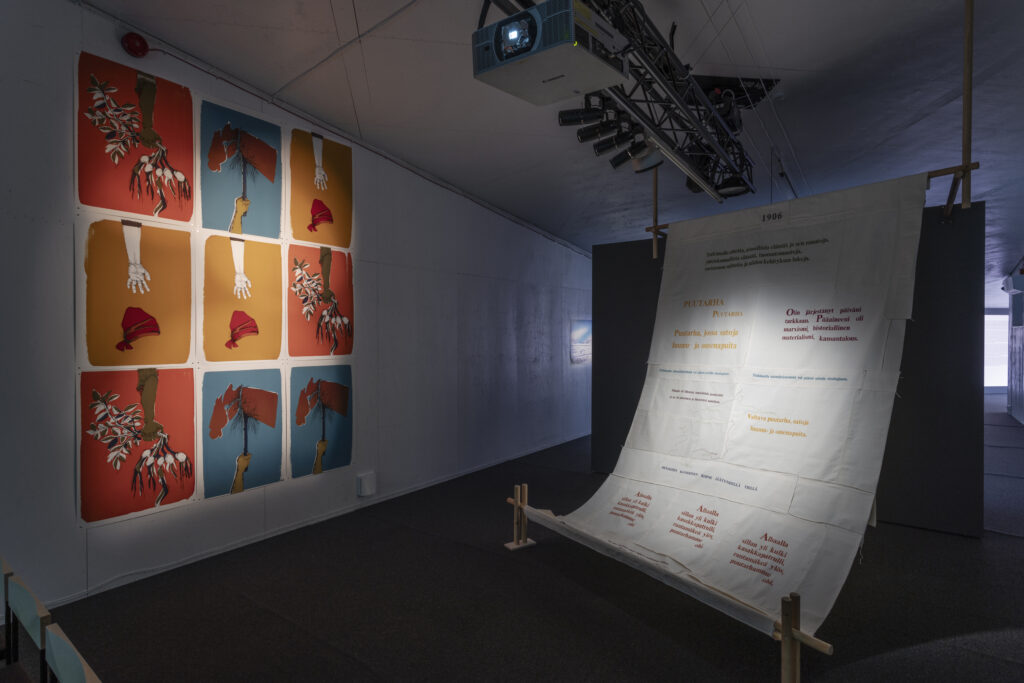Jaana Kokko
Roma Mountain

This film takes as its point of departure the memories and work of the controversial Finnish-Estonian writer, businesswoman and leftist politician Hella Wuolijoki (1886–1954), who was born as Ella Murrik in Valga. The text fragments in the installation describe moments in her father’s garden during the aftermath of the 1905 Revolution, which would lead to Wuolijoki becoming politically active. Reflecting on the film, the artist asks “what kind of a garden makes political awakening possible and what remains alive in a place from which the protagonist has already left?”
When researching Hella’s presence in present-day Valga/Valka, on the border of Estonia and Latvia, the artist develops several parallel themes that guide the film’s narrative. In the course of her research Kokko interviewed women who live in the neighborhood where Wuolijoki grew up, speaking with them about their everyday life and work. These women mentioned the “disappearance” of Roma in the neighbourhood, which evolved into a separate theme in the work. This neighbourhood, which is located on a hill on the outskirts of the town, is known in local vernacular as the Roma Mountain and was a vivid area where many Roma families lived. When Bergitta, a local Roma woman, shares stories of the grave losses in her extended family in the Nazi genocide against Roma people, the meaning of these losses for different groups becomes particularly visible.
Experiences of motherhood and care are another theme. As the artist was often accompanied by her daughter Aira when making the film, motherhood became integral not only to the narrative but also to the way of telling the story. Motherhood is a recurrent theme in Jaana’s interviews with the women and in telling the story she assumes the roles of narrator and working mother, a combination that still remains unusual. It is through this position that the film sensitively opens possibilities for talking about history by integrating different temporalities and relationships into one story in order to include its difficulties.